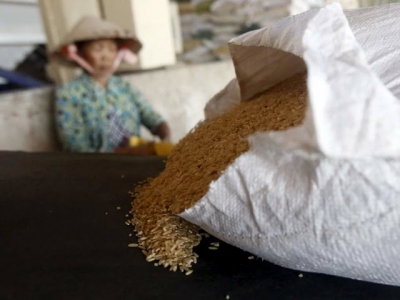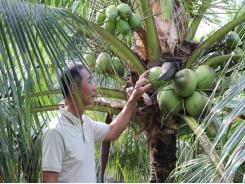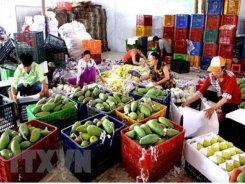Vietnamese produce struggle to enter China

Agriculture exports to China dropped 9.2 percent year-on-year in January-July as exporters failed to meet tightened quality standards.
Grains at a rice processing factory in Vietnam's southern Mekong Delta city of Can Tho. Photo by Reuters/Kham.
The agriculture export value has fallen to $3.8 billion, with rice falling 67.5 percent to $159.4 million and vegetables and fruits dropping by over 8 percent to $1.6 billion, said Tran Thanh Hai, deputy head of the export-import department under the Ministry of Industry and Trade.
The decline has happened after China began tightening its quality and safety standards for imports since earlier this year, he said at a recent forum.
For example, bananas need to be boxed with Chinese labels, or watermelons need to have codes to trace origins, he said, adding that some fruits are only allowed to be imported through specific border gates.
China had announced these regulations in mid-2018 but many businesses did not pay attention, Hai added.
"The new standard is an inevitable global trend. Many other countries are also tightening their import regulations."
However, Vietnamese businesses still operate in small scale and are unable to meet higher quality standards.
Minister of Industry and Trade Tran Tuan Anh said many Vietnamese agriculture exporters to China were unprofessional and depended on unofficial channels.
Many of them are small businesses who are not up to date with the latest information and do not have a stable source of supply, leading to produce being stuck in the country, he added.
Le Hoang Oanh, head of the Asia-Africa market department under the trade ministry, said that it was necessary to make plan to produce each type of agricultural produce for certain export markets on the basis of studies done on the market size, consumer tastes and global trends.
"Exporters need to abandon the mentality of considering China as an easy market, shifting unofficial exports to official, improve fruits quality and facilitate origin traceability."
There are nine Vietnamese fruits allowed to enter China through official channels: dragon fruit, mango, logan, litchi, rambutan, banana, watermelon, jackfruit and mangosteen.
Between January-July, the U.S. replaced China as the top buyer of Vietnamese agriculture produce, according to Ministry of Agriculture and Rural Development data.
Có thể bạn quan tâm
Phần mềm

Phối trộn thức ăn chăn nuôi

Pha dung dịch thủy canh

Định mức cho tôm ăn

Phối trộn phân bón NPK

Xác định tỷ lệ tôm sống

Chuyển đổi đơn vị phân bón

Xác định công suất sục khí

Chuyển đổi đơn vị tôm

Tính diện tích nhà kính

Tính thể tích ao hồ




 Long An transforms plants and animals vigorously after…
Long An transforms plants and animals vigorously after…  China tightens regulations on farm imports
China tightens regulations on farm imports